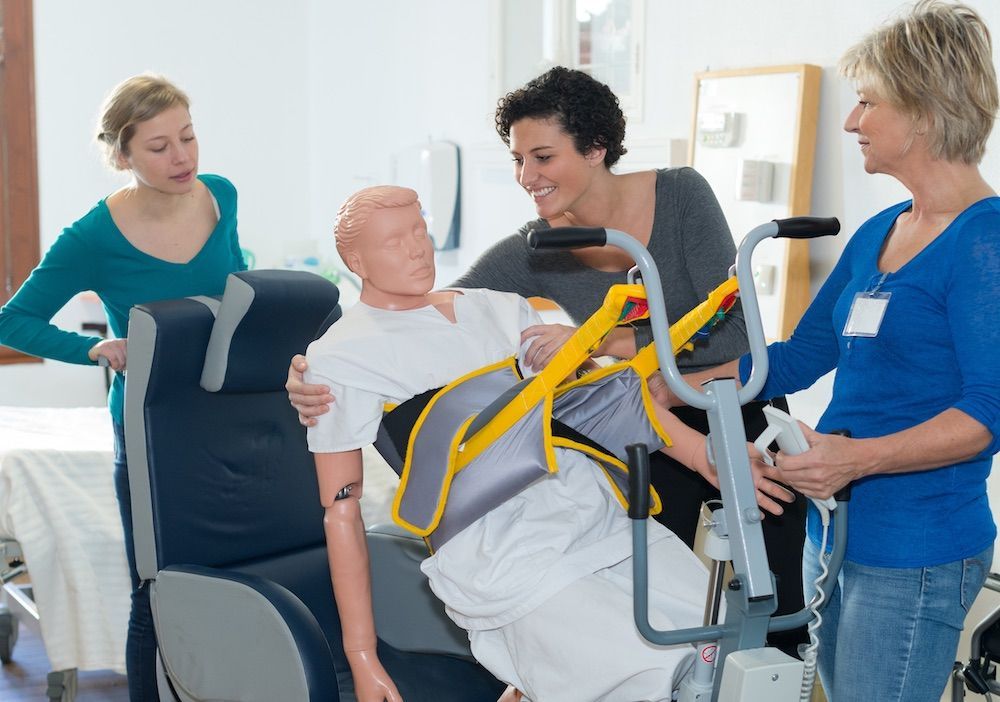How to Maximize Low-Fidelity Manikins Use in Healthcare Simulation
Low-fidelity manikin healthcare simulation is a regular part of clinical simulation programs. For some healthcare simulationists, frequent access to a high-fidelity manikin would be a luxury. For others, low-fidelity manikin simulation is used for various reasons, such as ease, time restrictions, or lack of clinical simulation technician support. This HealthySimulation.com article by Erin Carn-Bennett will examine ideas and possibilities to consider when the choice is made to maximise low-fidelity manikin clinical simulation.
What is Fidelity in Medical Simulation?
Fidelity in clinical simulation is a multipronged concept that encompasses the degree of realism which is produced through healthcare simulation equipment, environment, and scenario. Buy-in by participants is vital to add to the level of fidelity and can be accentuated by elements within the clinical simulation scenario other than a high-fidelity manikin if not possible.
Sponsored Content:
Environmental Fidelity
The location of the scenario can have an impact on the fidelity of the healthcare simulation. For example, clinical simulations conducted in a simulation center can have a higher degree of realism. However, if able to run a healthcare simulation in-situ in a regular clinical environment for the native team, the fidelity and realism will be enhanced for the learners.
The inclusion of all team members that would be involved in the clinical environment in the clinical simulation scenario adds to the fidelity of the healthcare simulation. The ability to have a healthcare provider available to prescribe during the clinical simulation can ensure that the clinical simulation will progress with the ability to deliver newly ordered medications and treatments in a standard clinical fashion.
Moulage and Props
Sponsored Content:
The incorporation of clinical props enhances the realism of the clinical scenario. For example, if the organization where the clinical event usually occurs has an emergency drug worksheet on the wall, ensure this is present in the clinical simulation scenario. Make sure to write clinical notes for the simulated patient and fill in an observation chart if relevant to the clinical simulation to enhance fidelity further.
To increase the fidelity of the simulation, use moulage on a low-fidelity simulator if feasible. This may include bruises, bandages, and fake blood. A compound fracture can be created with a small amount of plaster of paris and fake blood. The moulage does not need to be complex to create a higher level of fidelity. Other examples include the placement of a bag of fake blood or intravenous fluids marked with antibiotics attached to the patient.
Props may be used to demonstrate concepts, such as bleed mats can demonstrate significant blood loss in the bed, to increase the effectiveness of the scenario without an astronomical cost. Low-cost make-up in reds and purples can also be incredibly effective at enhancement of fidelity. There are great resources online for moulage on HealthySimulation.com and well priced resources that can be used from low-cost homeware stores.
Another simple example of effective moulage is to place a small amount of super glue at the base of a tracheostomy tube that is within the static manikin to show realism in a blocked tracheostomy scenario. As participants attempt to suction in a blocked tracheostomy scenario, there will be the sensation of the suction catheter not able to pass the tracheostomy tube. Fidelity in this case can also be enhanced with the presence of the patient’s emergency tracheostomy equipment as clinical simulation props to the scenario. When the participants perform an emergency tracheostomy change with a tube without the super glue in the end then the patient’s condition can improve.
Embedded Participants
The presence of embedded participants/actors or standardized patients to facilitate the role of family members or parents can enhance fidelity with the use of a low-fidelity manikin. Consider the use of a standardized person/patient and how the role may take shape within the organization in the future. The embedded participants can increase the scenario’s psychological or educational fidelity through de-escalatation of a situation or education on discharge instructions. Be clear with embedded participants on their role and ensure that education is provided of expectations so that the right balance of their presence is achieved for the learners in the clinical simulation.
Realism
If possible, allow participants to make actual phone calls within the clinical simulation. If able, organize a faculty or specialty team member to take a phone call during the clinical simulation. Ensure that participants are prepped to state that they are making a call from a clinical simulation in the pre brief. The process for team members to consider and complete a phone call can really enhance the fidelity of the clinical simulation scenario.
The use of in situ clinical equipment, such as the emergency trolley, can be incredibly effective for the enhancement of fidelity of a clinical simulation. At the pre brief of the clinical simulation ensure that participants are prepped for success by the setup of clear rules of engagement. An example of this around clinical equipment would be to use medication vials instead of water or saline.
Consider vocal props and how this could enhance the realism of the clinical scenario. This can be easily achieved by a bluetooth speaker under the patient’s bed and a faculty member speaking into the speaker via a mobile phone. Faculty can also give sound effects such as suction and clinical cues to enhance the fidelity and realism of the clinical simulation.
View the HealthySimulation.com LEARN CE/CME Platform Webinar Putting It All Together: Enhancing Realism in Clinical Simulation Scenarios to learn more!
Beeps of central patient monitors increase fidelity exponentially. There are a number of programs on the market which can be utilized in place of a monitor for a low fidelity manikin. Some are incredibly low cost or even free. Even a monitor screen that has oxygen saturation and heart rate signals on a cellphone screen can increase the fidelity a great deal for participants.
This article has explored why fidelity is important in healthcare simulation. The main focus has been for the use of a low-fidelity simulator and enhancing fidelity with simple and low-cost mechanisms. Just because a service only has access to a low-fidelity simulator does not mean that impactful clinical simulation cannot be delivered.
Learn More About Fidelity in Simulation!
Erin Carn-Bennett is a Simulation Nurse Educator for the Douglas Starship Simulation Programme in Auckland, New Zealand. Carn-Bennett has her Masters of Nursing and has an extensive nursing career within pediatric emergency and also nursing management. She is passionate about debriefing and all things simulation. Carn-Bennett is a member of the IPSS board of directors. Carn-Bennett is the lead host of the podcast Sim Nurse NZ.
Sponsored Content:


















